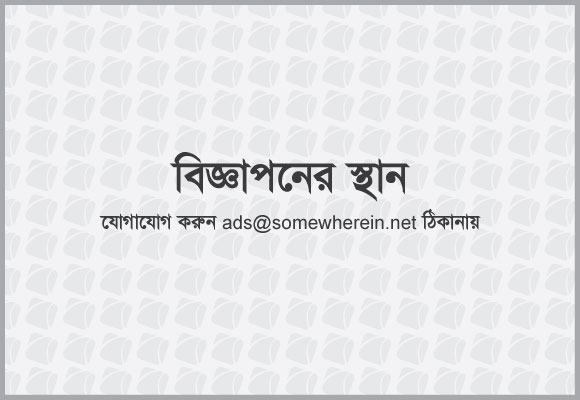জাপানিরা মিথ্যা বলে গা বাচানোর চেষ্টা করে, এ কথা আমার নয়। পশ্চিমা জাপান বিশেষজ্ঞদের। এ নিয়ে কপিপেস্ট পোস্ট।
Any foreigner who lives in Japan—as I once did—is familiar with this phenomenon: If you ask a Japanese person on the street for directions, and they don’t know the answer, sometimes they’ll direct you anyway just to avoid the embarrassment of having to admit they don’t know how to get there or can’t help you. It’s an illustration of what the American anthropologist Ruth Benedict identified long ago as Japan’s culture of “shame,” meaning the Japanese people are raised to behave based on how they’ll be perceived by others, as opposed to more Western notions of “guilt,” in which a sense of right and wrong is internalized as a moral code.
Like all capsule descriptions of national cultures, this one is too simplistic, especially for a globalizing world. But it may give us some insight into how the Japanese government is dealing with the nuclear emergency that its prime minister has called the worst disaster since World War II.
Tokyo is almost certainly not telling us the full truth, which has been getting more and more embarrassing. And despite the outside sources of monitoring available, the truth may be far worse than we are being told, if history is any measure.
It was especially noteworthy when, at a State Department briefing on Wednesday night, spokesman Mark Toner admitted that Washington was no longer following the guidance of its close East Asian ally. The U.S. government is now telling American citizens who live within 80 kilometers of the badly damaged Fukushima Daiichi nuclear power plant to evacuate the area—the Japanese government is only asking people within 20 kilometers to leave. Previously, the United States had aligned itself with the Japanese recommendations. What led to that change? Toner was asked. “Well, I mean, obviously, it’s a very fluid situation,” he said.
Earlier Wednesday, the chairman of the Nuclear Regulatory Commission, Gregory Jaczko, broke openly with official Japanese estimates of the damage at the Fukushima Daiichi plant. "We believe that radiation levels are extremely high," he said at a congressional hearing.
All governments dissemble of course, especially when disaster strikes, but the Japanese have sometimes been especially egregious. In 1995, the Monju experimental fast-breeder reactor sprung a massive leak of liquid sodium, and it was later discovered that the semi-governmental agency that ran it had actually falsified the video of the event. Earlier on in the 1990s, Japan was accused of not divulging full plans for overseas shipments of plutonium. Japan has been far more forthcoming in recent years, said David Albright, a former Iraq inspector who runs a respected nuclear-tracking organization called the Institute for Science and International Security. But Albright worries that Japan may be reverting to form, and that misinformation—or no information—is now coming out of Tokyo.
Whatever is being communicated is meager and seemingly reluctant. Earlier in the week, foreigners had to rely on the U.S. Navy for comprehensive radiation readings offshore far more than the Japanese government itself or the Tokyo Electric Power Co., which runs the most damaged reactors. “Now outsiders, local governments, and prefectures are doing radiation monitoring,” said Albright. “But there’s no system that says what radiation doses are occurring in evacuation zones or outside. It’s hit and miss. They didn’t have a joint crisis center going until Tuesday. They really have done themselves a disservice, because now is when they need the people’s trust.”
There are few countries where maintaining nuclear credibility is more important than in Japan. It’s a little-known fact that for many years, Japan has been the chief surveillance target of the International Atomic Energy Agency, whose mission is to track plutonium and enriched uranium used by the 143 signatories to the Nuclear Non-Proliferation Treaty so that it isn't diverted to weapons and doesn't end up in the hands of terrorists, thieves, or unscrupulous traders.
Japan has, by all accounts, always been cooperative with IAEA inspectors. But the reason for this extensive surveillance is that Japan has such a huge civilian nuclear program, and because it is still largely plutonium-fueled, the country has huge stockpiles of the stuff, far more tons than any country except the major nuclear powers Russia and the United States. “They’re separating too much plutonium they can’t use,” said Albright.
Now Tepco—and the government—face their worst crisis and biggest test of honesty as they desperately try to figure out how to contain or even entomb the damaged Fukushima Daiichi reactors and stop the flow of radioactive material into the air. State Department spokesman Toner, asked whether the U.S. government was still satisfied with the information it was getting out of Tokyo, declined to offer an endorsement. “I think we’re just cognizant of the circumstances under which information is flowing, so it’s difficult. I mean, it’s a difficult situation. I don’t know how to better put it than that.”
Translation: Don’t trust those Japanese directions.


 অনুগ্রহ করে অপেক্ষা করুন। ছবি আটো ইন্সার্ট হবে।
অনুগ্রহ করে অপেক্ষা করুন। ছবি আটো ইন্সার্ট হবে।






